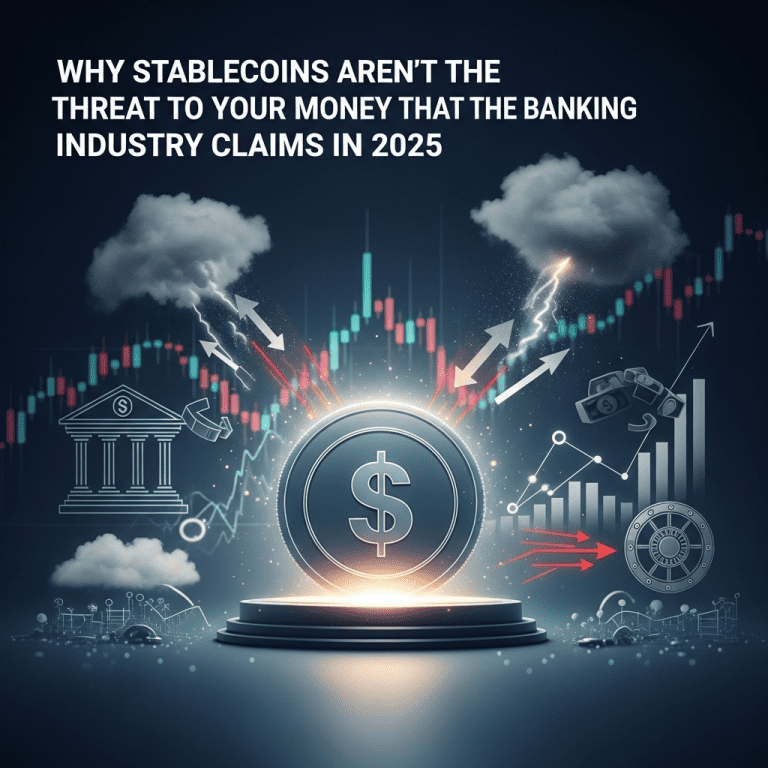For investors exploring digital assets, it’s easy to encounter headlines stating that stablecoins aren’t the threat to your money that the banking industry would have you believe. In 2025, with the rise of crypto adoption, stablecoins have sparked both enthusiasm and criticism. But how risky are these digital assets, especially compared to traditional financial systems? Let’s break down the facts investors need to know.
Understanding Why Stablecoins Aren’t the Threat to Your Money
Stablecoins, such as USDC and USDT, are digital currencies pegged 1:1 to fiat currencies like the US dollar. This design aims to mitigate the wild price swings seen in cryptocurrencies like Bitcoin or Ethereum. Stablecoins serve as a bridge between traditional finance and the digital economy, facilitating rapid transactions, 24/7 liquidity, and global movement of money without major volatility risks.
Banking institutions have raised concerns about stablecoins, arguing that they threaten monetary stability and consumer security. However, the reality is more nuanced. Most leading stablecoins are fully backed by audited reserves, and the industry is moving toward greater transparency and regulatory oversight. For informed investors seeking safe havens during volatile periods—such as after central bank decisions or earnings seasons—stablecoins can actually offer more stability than some traditional investment options, as discussed on investment insights platforms.
Banking Industry Concerns: Fact or Fear-Mongering?
Traditional banks warn that as stablecoins grow, they could suck money out of the insured banking system, undermining deposit insurance and amplifying systemic risk. While legitimate regulatory questions exist, data from 2023 to early 2025 shows stablecoin redemptions and issuances occur with negligible disruption to major financial markets.
Moreover, frequent stress tests and public disclosures by top stablecoin issuers have shown a level of transparency that some banks themselves have struggled to meet. The notion that stablecoins inherently threaten your money ignores the safeguards now built into leading digital asset platforms and the evolving regulatory frameworks being applied worldwide. Institutional investors can find valuable analysis about integrating stablecoins into their diversified portfolio strategies online.
Advantages and Use Cases for Stablecoins in the Stock Market
Stablecoins aren’t just about crypto speculation—they’re increasingly used to enhance efficiency in the broader financial ecosystem. From instant settlement of trades to bypassing costly cross-border wire fees, stablecoins improve operational agility for investors and fund managers. Stock traders find them useful as a safe and liquid digital asset during market uncertainty, particularly after-hours or when trading foreign equity markets.
This flexibility is especially relevant as more brokerages and fintechs integrate stablecoins for real-time settlements—a feature traditional wire transfers or ACH systems cannot match. Utilizing stablecoins allows retail and institutional investors to swiftly capitalize on fast-moving opportunities and manage risk more proactively.
Regulation, Security, and Transparency
In response to both innovation and skepticism, regulators in the US, Europe, and Asia have stepped up oversight of stablecoins. Leading issuers now publish detailed audits and monthly reserve attestations, while blockchains offer public, verifiable records of transactions. Such measures address concerns over fraud or insolvency, making stablecoins increasingly comparable to regulated financial products.
It’s crucial for investors to choose stablecoins with robust reserve disclosures and regulatory compliance. This due diligence mirrors the same level of scrutiny investors should apply when selecting stocks or ETFs. Our recent beginners’ guide to digital assets highlights due diligence factors in more depth.
The Future Outlook: Integrating Stablecoins and Traditional Finance
As technology blurs boundaries between digital and traditional markets, stablecoins will likely play a growing role in capital markets and payment rails. New partnerships between fintechs, stock exchanges, and banks illustrate this convergence. The real disruption may be positive: more choice, competition, and transparency for all market participants.
Instead of viewing stablecoins as an existential threat, the investment community can approach them as an evolving tool—a way to enhance diversification, reduce friction, and respond to emerging investor needs. By staying informed and verifying the underlying structure of stablecoins, investors can leverage these innovative assets confidently and safely amid an ever-changing financial landscape.
Conclusion
In 2025, the idea that stablecoins aren’t the threat to your money that traditional banks portray is supported by evidence, regulation, and transparency. Stablecoins are becoming a fixture of modern investing, empowering individuals and institutions to move value efficiently while maintaining safety. As the finance sector continues to converge with digital innovation, being open to these assets—without blindly accepting industry fear-mongering—is simply good investment practice.









